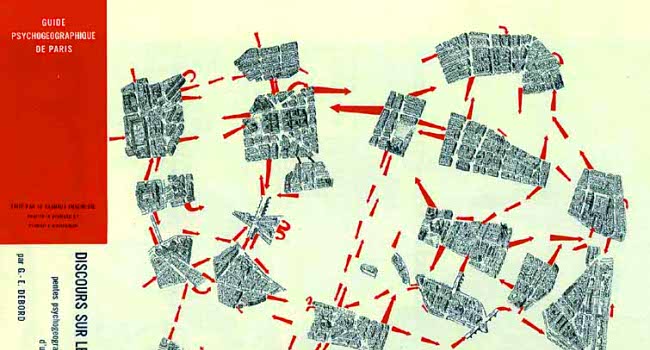It’s summer in the Southern city of Nashville, TN and that’s means we’ve been in the middle 90′s with high humidity for weeks on end. Often I try to get outside despite the heat during the summer, but it’s been a pretty chaotic season and I haven’t really had the fortitude to push back against the heat that much this year.
That said, I have been cutting the corners here and there — at the first sign of a dip in the heat I’m usually heading for a fishing creek or heading out for a walk. It was only in the high 80s on Saturday and I was happy to have a great short walk in the afternoon. I really like to walk. It’s simultaneously energizing and calming — just the kind of active meditation practice I’ve always preferred.
Having got a good walk in I was happy to find this article about the death of purposeless walking — Ezra Buckley had flipped it into our Remnants mag. The article deals with the dearth of walking in general as well as with the exercizification of walking and the ubiquity of mobile devices ruin the practice.
Of course, the phrase “purposeless walking” called to mind the dérive of Debord and the Situationists. Here’s a bit from the Bureau of Public Secrets…
One of the basic situationist practices is the dérive,(1) a technique of rapid passage through varied ambiences. Dérives involve playful-constructive behavior and awareness of psychogeographical effects, and are thus quite different from the classic notions of journey or stroll.
In a dérive one or more persons during a certain period drop their relations, their work and leisure activities, and all their other usual motives for movement and action, and let themselves be drawn by the attractions of the terrain and the encounters they find there. Chance is a less important factor in this activity than one might think: from a dérive point of view cities have psychogeographical contours, with constant currents, fixed points and vortexes that strongly discourage entry into or exit from certain zones.
But the dérive includes both this letting-go and its necessary contradiction: the domination of psychogeographical variations by the knowledge and calculation of their possibilities. In this latter regard, ecological science, despite the narrow social space to which it limits itself, provides psychogeography with abundant data.
The ecological analysis of the absolute or relative character of fissures in the urban network, of the role of microclimates, of distinct neighborhoods with no relation to administrative boundaries, and above all of the dominating action of centers of attraction, must be utilized and completed by psychogeographical methods. The objective passional terrain of the dérive must be defined in accordance both with its own logic and with its relations with social morphology.
In his study Paris et l’agglomération parisienne (Bibliothèque de Sociologie Contemporaine, P.U.F., 1952) Chombart de Lauwe notes that “an urban neighborhood is determined not only by geographical and economic factors, but also by the image that its inhabitants and those of other neighborhoods have of it.” In the same work, in order to illustrate “the narrowness of the real Paris in which each individual lives . . . within a geographical area whose radius is extremely small,” he diagrams all the movements made in the space of one year by a student living in the 16th Arrondissement. Her itinerary forms a small triangle with no significant deviations, the three apexes of which are the School of Political Sciences, her residence and that of her piano teacher.
Here’s a documentary about Debord and the Situationists with a great little breakdown on the dérive from music writer extraordinaire, Greil Marcus…
Stay Awake!
Please subscribe to my YouTube channel where I archive all of the videos I curate at Insomnia. Click here to check out more Counter Culture posts.








